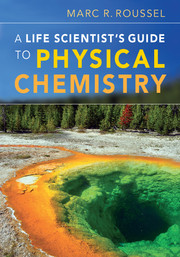This chapter will introduce you to the analysis of a key class of kinetics experiments, namely initial rate experiments. We will consider only the simplest class of rate laws, those where the rate is proportional to some powers of the concentrations. This is a limited class, but one that comes up surprisingly often in practice. Initial rate experiments are also useful when a reaction has a complex rate law. However, complex rate laws are best understood in the context of a study of reactionmechanisms, so we put off this discussion for now.
Initial rate studies
Rate laws of chemical reactions are often complicated. They can depend on the concentrations of reactants, products, or other chemicals present in the system in almost arbitrary ways. It would be impractical to try to deal at once with all possible complications, so we often try to study reactions under conditions in which we can expect simpler behavior.
Perhaps the most widely used experimental simplification is the method of initial rates, which was briefly mentioned in Section 11.3. In this method, we study the reaction only for a very short time after initiation. During this time, the concentrations change very little so that a number of complications arising from changes in the reaction mixture over time are avoided. For instance, if we start with a mixture containing only reactants, then very little product will accumulate during the reaction and we can neglect the reverse reaction whose rate, according to the law of mass action, depends on the product concentrations.
